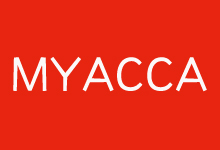1 Threats from New Entrants
There are three threats posed by potential new entrants to an industry:
They bring with them new capacity which may directly affect the pricing structures of the industry.
They threaten market share in a very direct way, because they enter the industry determined to achieve “critical mass” as quickly as possible. This will allow them to exploit any scale economies.
The firms within the industry will face increased costs, as they collectively erect and maintain barriers to entry in order to deter new entrants.
A barrier to entry is any mechanism that deters entrants.
2 Threats from Substitutes
A substitute creates a threat to market volume for a product or service when customers might switch to the substitute.
Defences against substitutes are:
To produce and control them;
To buy them;
To differentiate the product to such an extent that customers perceive that there is “no substitute”。
3 Bargaining Power of Buyers
Porter suggests that buyers are most powerful when:
They are relatively large in comparison to the seller;
The goods or services sold represent a significant part of a buyer's product cost;
Goods/services are undifferentiated/standard, so alternative suppliers are on hand;
There are few switching costs to prevent them from buying elsewhere;
They threaten backward integration;
They are not quality-sensitive; and
They have full information about the seller's cost structure and margins.
4 Bargaining Power of Suppliers
Suppliers are powerful when:
There are relatively few suppliers of the product or service;
Few or no substitutes exist;
They perceive the customer to be small or unimportant;
Their product is an important component of the customer's product or service;
They provide a differentiated or unique product; and
They threaten forward integration.
5 Rivalry
Porter suggests that rivalry is more powerful where:
Firms are equally balanced;
Industry growth is slow;
Storage costs are high;
There is little product differentiation and therefore little brand loyalty;
Large capacity increments exist due to high stepped fixed costs or large batch sizes;
High strategic stakes (such as investment in factory or retail premises) exist; and
There are high exit barriers (e.g. redundancy costs)。
ACCA免费学员服务:
>>>【ACCA学期效果评估】评估一下自己现阶段是否适合报考ACCA?
>>>【ACCA考试相关信息查询】ACCA免考政策、教材购买注意事项等,任何不懂的问题都可在这里申请查询。
>>>【ACCA免费代理注册报名】想要报考ACCA,但不清楚ACCA报名流程?点击这里申请免费代注册。
>>>【ACCA机考中心信息查询】查询一下自己所在地区周边是否设有ACCA考试中心?(支持海外地区查询)
>>>【快速上手ACCA的资料领取】做个小测试,不仅可以帮助我们了解您的困惑,更可获取一份ACCA资料!
 ACCA考试得分锦囊
ACCA考试得分锦囊 为何要成为ACCA职业资格证持有
为何要成为ACCA职业资格证持有 ACCA是国际认可范围最高的财务
ACCA是国际认可范围最高的财务 ACCA培训的优势
ACCA培训的优势 ACCA的就业经验要求
ACCA的就业经验要求 考ACCA的20个理由:不光涨薪那
考ACCA的20个理由:不光涨薪那